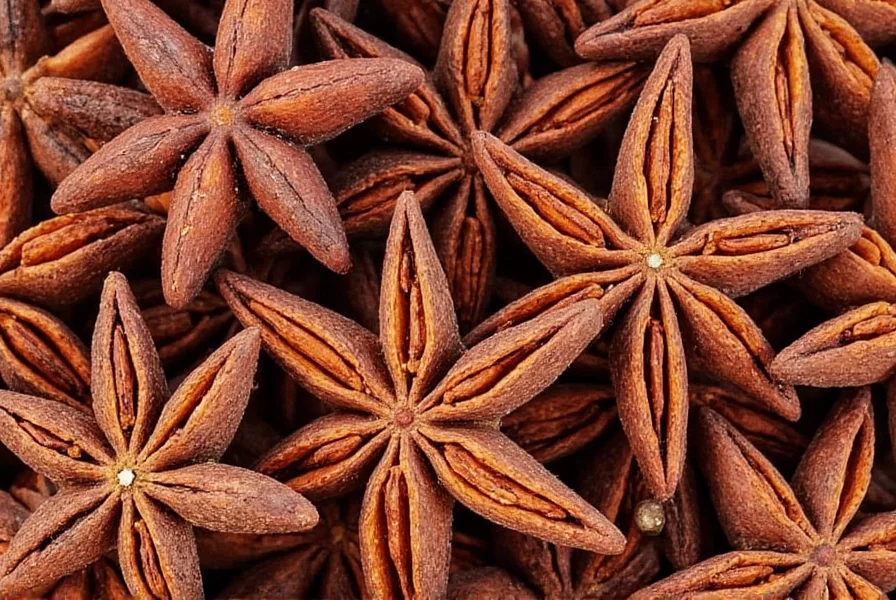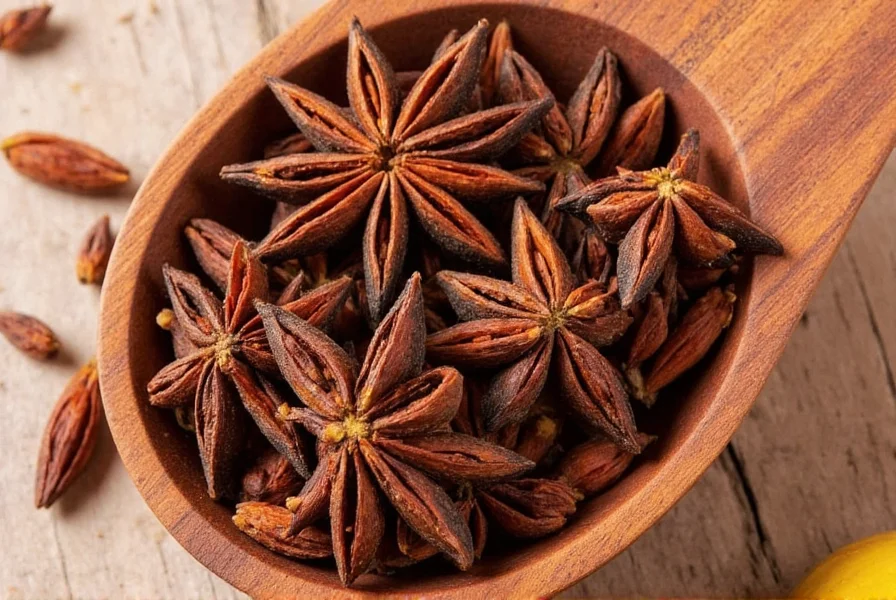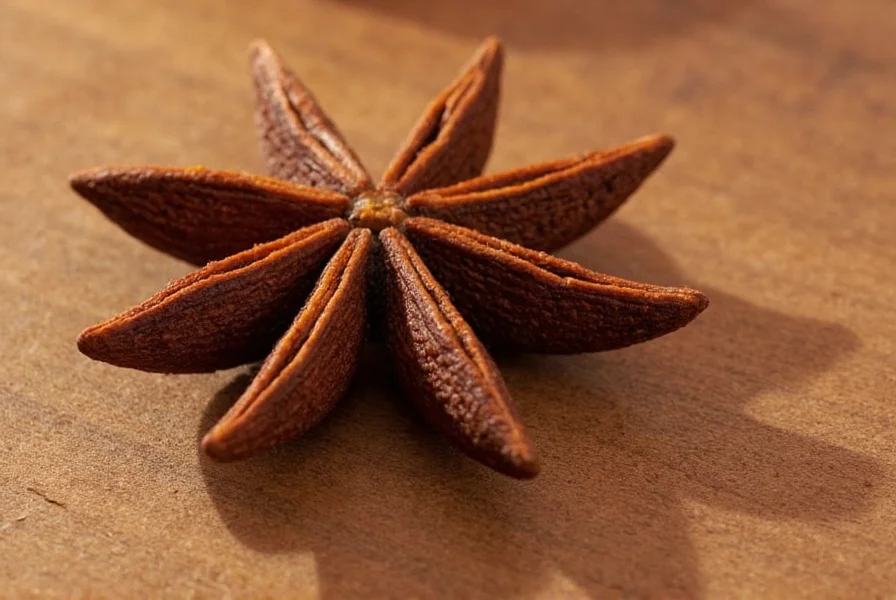When you encounter a star-shaped spice in recipes or at the market, you're almost certainly looking at star anise (Illicium verum). This distinctive spice has been used for centuries across Asian, Middle Eastern, and European cuisines, prized for both its unique appearance and complex flavor.
What Exactly Is Star Anise?
Star anise comes from the fruit of a small evergreen tree native to Southwest China and Northeast Vietnam. Each star-shaped pod contains 6-8 smooth seeds nestled within pointed carpels. The spice gets its characteristic shape as the fruit matures and dries, with the outer shell hardening into the familiar star pattern.
Unlike regular anise seed (which comes from a completely different plant in the parsley family), star anise belongs to the magnolia family. Despite their similar names and flavors, these are botanically unrelated spices. This distinction matters when considering substitutions or potential allergies.
Flavor Profile and Culinary Applications
Star anise delivers a potent combination of sweet, warm, and slightly bitter notes with dominant licorice undertones. Its flavor compounds—particularly anethole—are more intense and complex than those found in regular anise seed.
| Cuisine Type | Common Uses | Typical Pairings |
|---|---|---|
| Chinese | Five-spice powder, braised dishes, soups | Soy sauce, ginger, cinnamon |
| Vietnamese | Pho broth, marinades | Cinnamon, cloves, fish sauce |
| Indian | Garam masala, biryanis, chai | Cardamom, cloves, black pepper |
| Middle Eastern | Stews, rice dishes, spice blends | Cumin, coriander, turmeric |
How to Use Star Anise in Your Cooking
Chefs typically use whole star anise pods in slow-cooked dishes where the spice can gradually release its flavor compounds. The hard texture means it's usually removed before serving. For quicker applications, ground star anise works well but loses potency faster than whole pods.
When incorporating star anise into recipes:
- Use one whole pod per serving in soups and stews
- Add early in cooking for maximum flavor extraction
- Toast briefly in dry pan to enhance aromatic compounds
- Remove before serving as the hard points can be unpleasant to bite

Substitutes When Star Anise Isn't Available
If you need a star-shaped spice alternative, consider these options based on your recipe requirements:
- Anise seeds (use 1 teaspoon seeds for each star pod) - similar flavor but less complex
- Fennel seeds (use 1.5x amount) - milder, sweeter alternative
- Chinese five-spice powder (use 1/2 teaspoon per star) - contains star anise plus complementary spices
- Fenugreek (use sparingly) - for savory applications requiring bitter notes
Remember that no substitute perfectly replicates star anise's unique flavor profile, especially in traditional Asian dishes where it serves as a foundational flavor.
Storage and Shelf Life Considerations
To maintain maximum flavor, store whole star anise pods in an airtight container away from light and heat. Properly stored, they retain peak quality for 2-3 years. Ground star anise loses potency much faster—typically within 6-12 months.
Check freshness by rubbing a pod between your fingers and smelling for strong licorice aroma. Dull color and weak fragrance indicate diminished quality.
Health Considerations and Potential Benefits
Star anise contains shikimic acid, a compound used in some antiviral medications. Traditional medicine systems have used it for digestive support and respiratory relief. However, Japanese star anise (Illicium anisatum) is toxic and should never be consumed—always purchase from reputable sources.
While generally recognized as safe in culinary amounts, those with allergies to anise compounds should exercise caution. Pregnant women should consult healthcare providers before consuming star anise medicinally.

Common Misconceptions Clarified
Many home cooks confuse star anise with regular anise seed or Chinese star anise varieties. True star anise (Illicium verum) has reddish-brown pods with plump, rounded points. Japanese star anise has sharper, more slender points and contains toxic compounds.
Another frequent error involves overuse—the potent flavor can easily dominate a dish. Start with one pod per serving and adjust in subsequent preparations.
Where to Find Quality Star Anise
Look for plump, deep reddish-brown pods with intact points at Asian grocery stores, specialty spice shops, or reputable online retailers. Avoid pale, broken, or dusty specimens which indicate age or poor storage. The best star anise should feel slightly flexible rather than brittle.
Final Considerations for Culinary Success
Understanding what star-shaped spice to use and how to incorporate it properly can transform your cooking. Whether you're preparing Vietnamese pho, Indian biryani, or European baked goods, this distinctive spice adds depth and complexity that few alternatives can match. Remember to source authentic star anise, store it properly, and use it judiciously to maximize its culinary potential.
What is the star-shaped spice commonly found in Asian cuisine?
Star anise (Illicium verum) is the primary star-shaped spice used across Asian cuisines. It comes from the fruit of a small evergreen tree and is characterized by its eight-pointed star shape and warm, licorice-like flavor. This spice serves as a key ingredient in many traditional dishes including Vietnamese pho, Chinese five-spice powder, and various Indian curries.
Can I substitute regular anise for star anise in recipes?
While regular anise seed shares some flavor similarities with star anise due to the compound anethole, they are not perfect substitutes. Use 1 teaspoon of anise seeds for each whole star anise pod, but recognize that regular anise lacks the complex woody notes of star anise. For best results in traditional Asian recipes, seek authentic star anise rather than substitutes.
How should I store star anise to maintain freshness?
Store whole star anise pods in an airtight container away from light, heat, and moisture. Properly stored, they maintain peak quality for 2-3 years. Ground star anise loses potency much faster—typically within 6-12 months. Check freshness by rubbing a pod between your fingers; strong licorice aroma indicates good quality while dull color and weak fragrance suggest diminished potency.
Is star anise safe for everyone to consume?
True star anise (Illicium verum) is generally safe when used in culinary amounts. However, Japanese star anise (Illicium anisatum) is toxic and should never be consumed. Always purchase from reputable sources. Those with allergies to anise compounds should exercise caution. Pregnant women should consult healthcare providers before consuming star anise medicinally, though culinary use in normal amounts is typically considered safe.











 浙公网安备
33010002000092号
浙公网安备
33010002000092号 浙B2-20120091-4
浙B2-20120091-4